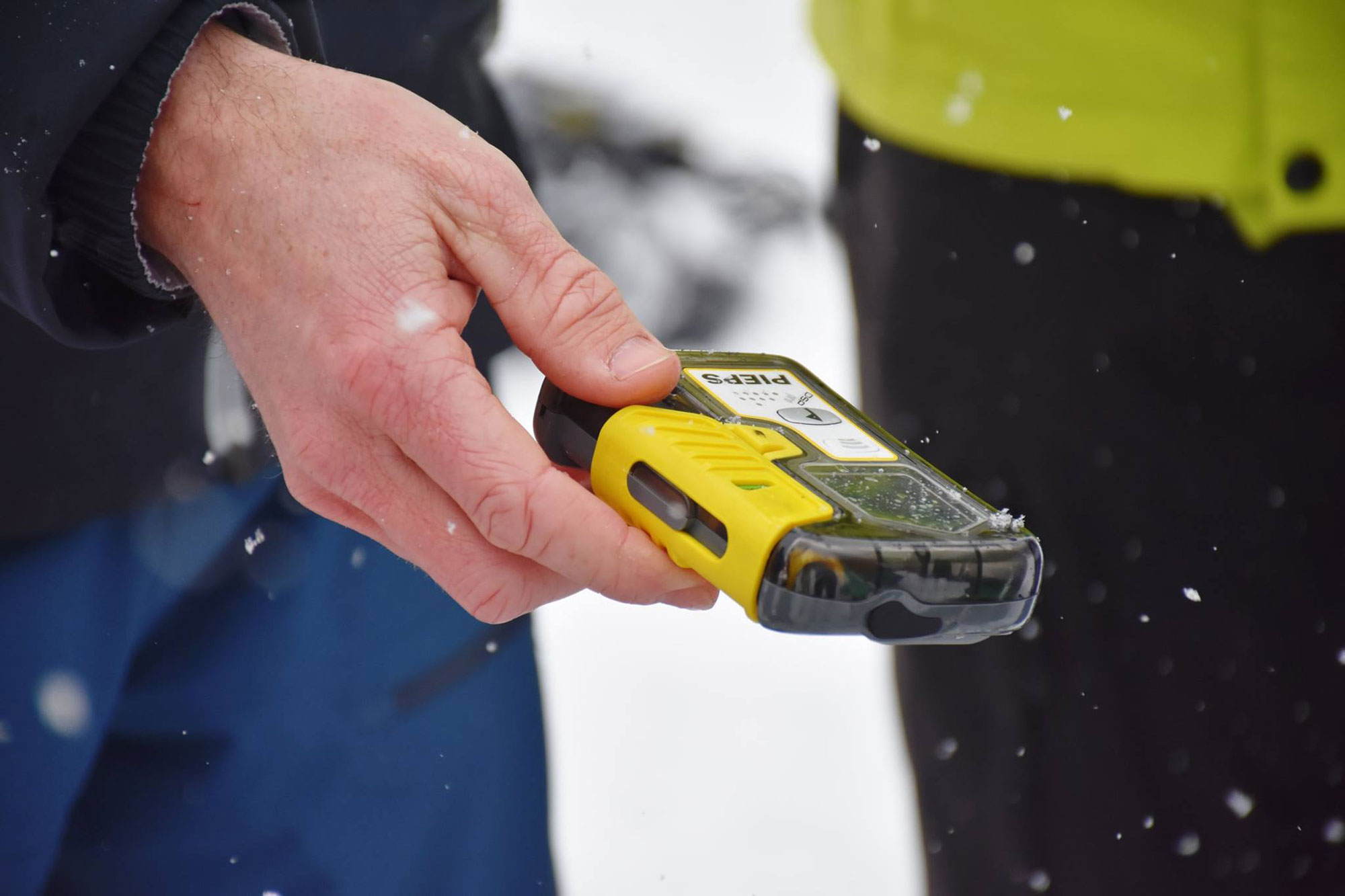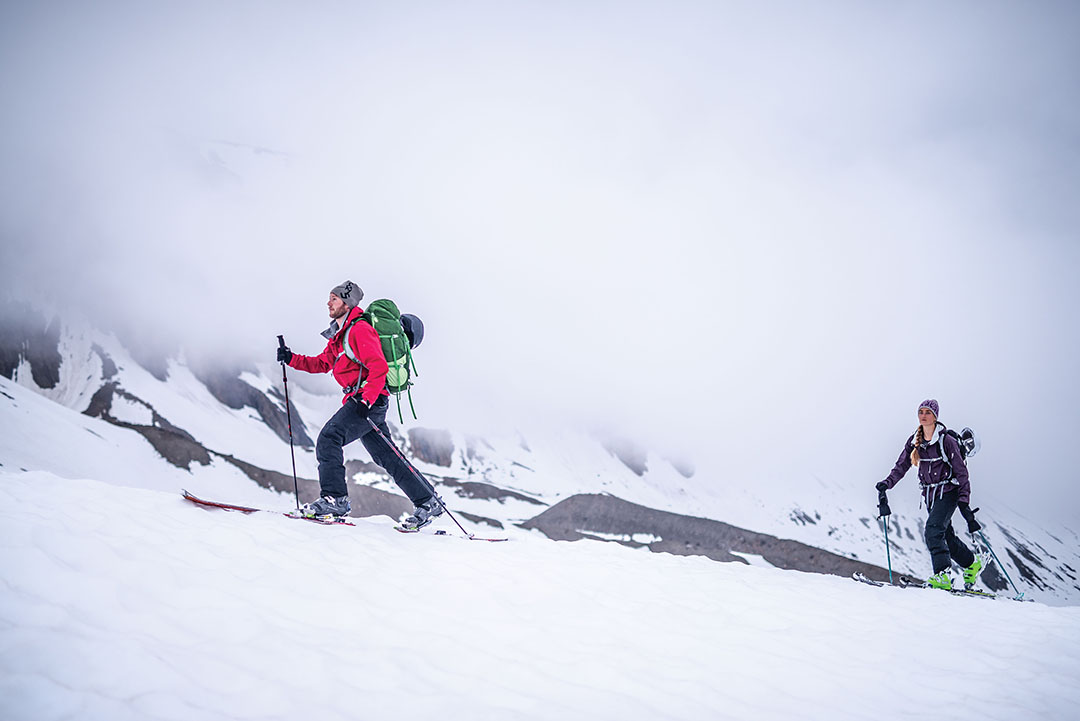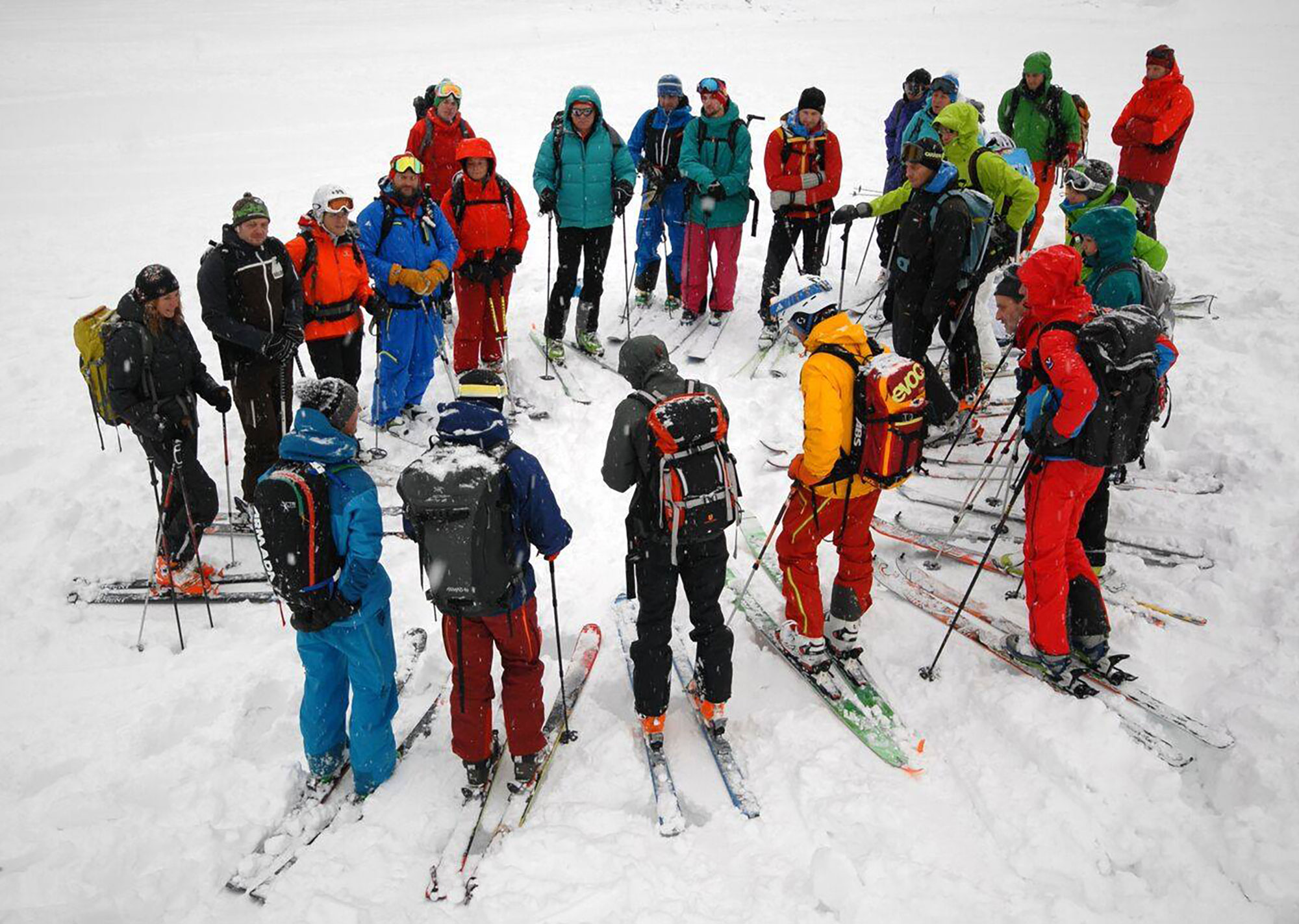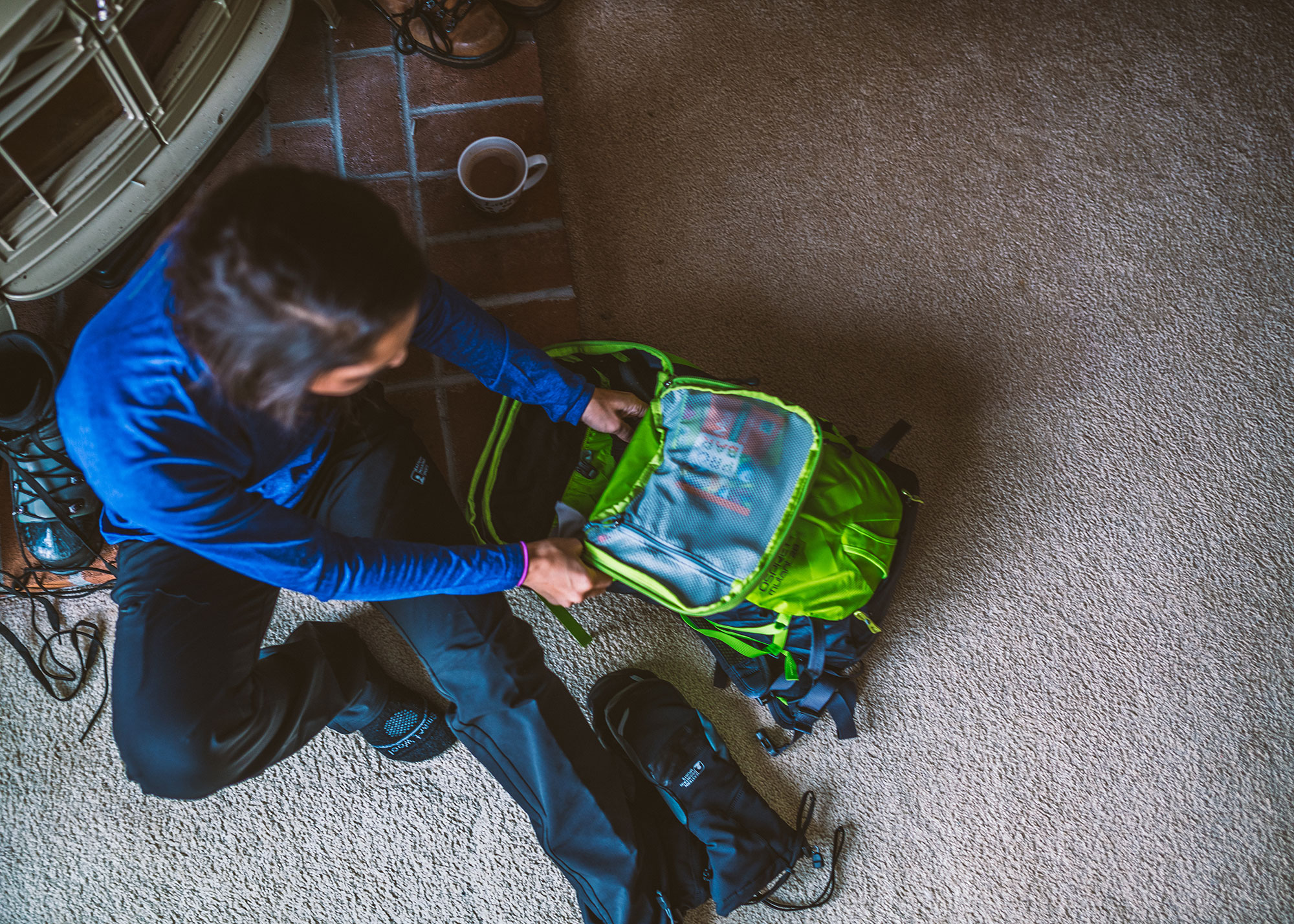There is nothing quite like the feeling of skiing fresh, untracked snow out in the wilderness after hours of hiking and toil, with no crowds or civilization in sight. This is the bliss of backcountry skiing, and while there are countless reasons why it is great, there are also considerations to be made in order to manage the increased risk of travel in potential avalanche terrain. Avalanches are serious hazards, and each year more and more accidents occur as more people venture out away from resorts into uncontrolled terrain.
Anyone who travels in avalanche terrain should consider taking avalanche equipment with them. This is not just limited to skiers and snowboarders, but any sort of users that find themselves in these areas. It is important that you have the proper equipment, not just to manage risk for yourself and your party, but also in case another person or group needs help.
The avalanche safety kit may have many pieces, all of which warrant discussion, but there are a universal three: a transceiver, a shovel, and a probe.
This article is by no means a replacement for instruction or education concerning avalanche rescue. Seek qualified instruction and training! Buying and having this equipment is one thing, but being able to use it correctly and effectively is entirely another.

Avalanche Transceivers
Your avalanche transceiver (also known as a beacon) is the most complex, varied, and expensive part of your avalanche kit. It is essentially a small two-way radio transmitter that works by generating signal pulses, which can be picked up by other transceivers in a different mode. The beacons have a handful of methods to lead rescuers to a buried victim. Generally, these are slightly smaller than your average PB&J sandwich and are carried either in a harness close to the chest or in specific “beacon pockets” that can be found in some ski and climbing apparel. Transceivers have been around since the 1960s, and decades of research and refinement make us lucky to have these advanced tools at our disposal. All transceivers on the market use a common signal frequency (457kHz), so no matter which model or brand you go with, every device is compatible with every other device.
Almost all avalanche transceivers on the market today (excluding some outliers) are three-antenna transceivers. Historically, transceivers have used two or even one antenna, and these are now defunct. Having two or fewer means that in certain orientations, the signal from a buried person’s beacon would not be intercepted by rescuers. Use caution if buying older transceivers, and make sure to check each unit.
Digital vs. Analog
These days, most transceivers on the market are digital, meaning they use a microprocessor to interpret incoming signals. This means the display is updated more quickly when searching for a signal. Analog transceivers are the original technology, and while the search range can be greater, these are more difficult to use. Some models are able to use both technologies in conjunction depending on the situation. Generally, transceivers in today’s market have quite varied effective ranges, generally between 40 and 70 meters, depending on brand and the technology that they use. The longer a beacon’s range, the further away from a victim you can be before beginning to pick up their signal, making searches faster and easier.
Features
There are many helpful features available on modern avalanche transceivers, without being simply bells and whistles. Most commonly you’ll find directional indicators on an LCD screen on the device, to be used in addition to auditory signals. These displays look different for each transceiver, so take time to find one that makes sense to you and learn how to read it quickly. Generally you will see a combination of directional arrows and distance in meters, both designed to help you narrow in on the buried beacon. Another common feature is a “flagging” feature, which in multiple-burial situations (when you’re looking for more than one person) allows you to intentionally block the signal from a victim that you have already found, to focus your device on the other buried transceiver. Different manufacturers also build in some of their own features to devices, like Bluetooth capabilities.
Pricing
As mentioned above, avalanche transceivers are the most expensive piece of the kit. Prices vary from around $250 to $500, accounting for differences in features and performance. While not every user needs the top of the line beacon, these are one life-saving piece of gear and are always money well spent. Have a good one that you trust with you or a friend’s life.

Avalanche Shovel
While it may benefit you to shave weight in other places in your kit, your shovel should be able to handle whatever you throw at it without failing. You will be shoveling like a mad person in a rescue, and worrying about your shovel’s durability shouldn’t be on your mind.
Materials
Avalanche shovels can be found using steel, aluminum, and plastic in their construction. In general, the shaft of the shovel will be aluminum, the handle will be plastic, and the blade should be metal. Plastic blades, while being the lightest option and may be good for digging out your car or building a snow fort, is much more likely to break when chopping and moving avalanche debris, and should be avoided in the backcountry.
The size of the blade will also affect how the shovel performs: A larger blade means you can move more snow at one time; However, it will be harder to fit into a backpack. The blades on the market have slightly different shapes to them, and it’s worth investigating what you like.
Handle
There are a variety of shovel handles out there, including D-grip, T-grip, and L-grip. There are pros and cons with each type.
The D-grip is your classic shovel handle like you’d find on a driveway shovel. These give you the best grip and offer the best leverage for using the shovel, especially with big gloves or mittens. However, it is larger, and also possible to break off the handle (being plastic).
The T-grip is very popular as well. It is simple, low profile, and very hard to break, although using it with mittens is trickier.
The L-grip and other special case handles you may find are less popular, but the L-grip will perform similarly to the T-grip, with a little more to hold onto. Try out a couple different types (with gloves/mittens) to see what you like.
Shaft
Shovels these days are pretty similar across the board when it comes to the shaft. In general, you’ll have an aluminum construction, with an extendable, telescoping adjustment. The shape of the shaft (round, rectangular, etc.) is more of a personal preference than anything. You will come across shovels with fixed or removable shafts, meaning you can or cannot separate the blade from the shaft and handle. Fixed construction is stronger, but a separating shovel will fit into a smaller package. Longer shafts will mean more leverage and perhaps increased performance, but it will be harder to fit in your backpack as well.
Features
Some shovels have extra features that can be rather helpful as well, but keep it simple! There are a couple models out that allow you to change the orientation of the shaft and blade from a “shovel” mode into a “hoe” mode, which can be quite helpful when used correctly. Some of these have extra little handles close to the blade for bonus control.

Avalanche Probe
The avalanche probe is used primarily for finding your buried person once you’ve narrowed in your transceiver search. These are all pretty simple and light, but be careful that yours will hold up to the rigors of use, and practice deploying and using your probe plenty before you need it.
Materials
Probes on the market will almost exclusively be either made of aluminum or carbon fiber, although steel probes can be found as well. The latter tend to only be used by professionals because of how robust steel is. For the layperson, aluminum is the most popular given its balance of weight and durability (and price). Carbon fiber is the lightest, saved for the gram-counting high-end athletes. Carbon fiber can splinter and break so one should use caution if using a carbon probe.
Length
Avalanche probes are available in a plethora of sizes, ranging from 2 to more than 3 meters in length, and tend to be measured in centimeters. Common sizes include 240, 280, and 320cm. The size you want depends on where you are and the size of the snowpack you’re operating in. In the Northeast, you will almost never need a 320cm probe, as this area simply doesn’t get that amount of snow. If you were traveling in the Pacific Northwest or British Columbia, 240cm may not be sufficient, as they have very deep snowpacks. It’s best to study up on where you will be going to educate your decision.
Features
Probes are simple pieces of gear in general, but there are still small differences that can feel important to certain users. Some probes have printed-on graduations, which can be bright and obvious at first, but later may fade or be worn off from use. Other manufacturers have started laser engraving the graduations to eliminate that problem, at a higher cost. The most variable feature of probes on the market will be the lockout mechanism. This can be a mechanical lock, a special tie-off, or some plastic snaps. Find something that couldn’t loosen itself when in use and it easy for you to use.

Additional Avalanche Gear
While the beacon, shovel, an probe make up the essential triad of avalanche safety and are the three items you should always have when traveling in avalanche terrain, there are other items that can play a key role in snow and avalanche safety that might also be a good idea to think about purchasing and bringing along.
RECCO
This technology works by using a detecting device to send out a concentrated radio signal until a separate reflector bounces the signal back to the detector when hit. These reflectors are woven into various pieces of outerwear and other gear. A rescuer using the detector can locate a buried person wearing RECCO reflectors similarly to a transceiver search. Something to note is that RECCO detectors are large and very expensive, meaning they are almost exclusively used by ski patrollers in resorts, or from helicopters, and therefore should never be relied upon in place of an avalanche transceiver, but can be a nice feature for inbounds skiers.
Airbag
Avalanche airbag systems are a newer player in the game, and have proven to be valuable if you’re caught in a slide. They work by keeping you closer to the surface of an avalanche once inflated, which hopefully means you either get found sooner or are only partially buried. They come with special backpacks or can be attached to specific backpack models. These systems are very expensive, sometimes hard to travel with, and manufacturers are still ironing out all the details.

Avalung
Another crafty piece of avalanche tech, the Black Diamond Avalung system, has been proven to significantly extend the amount of time you can breathe while buried in snow. It is basically a snorkel that allows you to inhale oxygen from in front of your face and exhale carbon dioxide from your back. The downside is that per manufacturer’s specifications, you should already have it in your mouth when an avalanche occurs (Because you may not be able to find it while being carried, and once the avalanche is over, it’s likely impossible to get it in your mouth), and it can be quite cumbersome.
Communication
In any emergency, it is crucial to have the option of calling for help if you need to. This becomes increasingly difficult in the backcountry, where most avalanches occur, so the communication systems that you use must be an integral part of your rescue kit. While cell phone service may be available in many remote places these days, it cannot be entirely relied upon. This is where special devices such as the Garmin inReach come into play. Radios and satellite phones can also be helpful when used correctly. Do your research on what kind of device fits your needs, and become an adept user before you need to.
Helmet
A large number of avalanche injuries and fatalities, especially in places like the Northeast which has a thinner snowpack, are trauma-based injuries. A simple ski helmet may be one of the biggest life-savers if you’re ever caught in an avalanche.

Sean Coit
Sean is a New Hampshire native who can be found looking for remote ski lines and climbing objectives when not working for the EMS Climbing School. Talking about gear makes up a large percentage of Sean’s conversations, and occasionally those ramblings will make their way into print.




